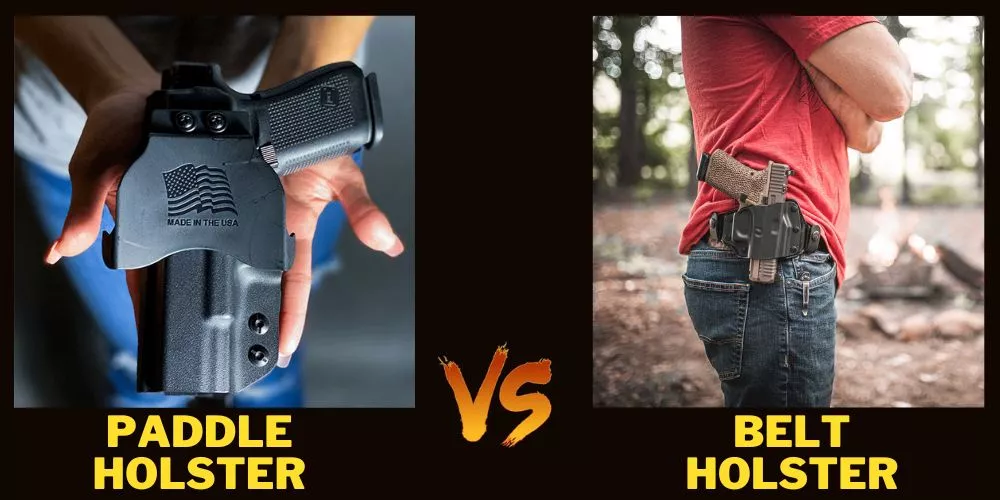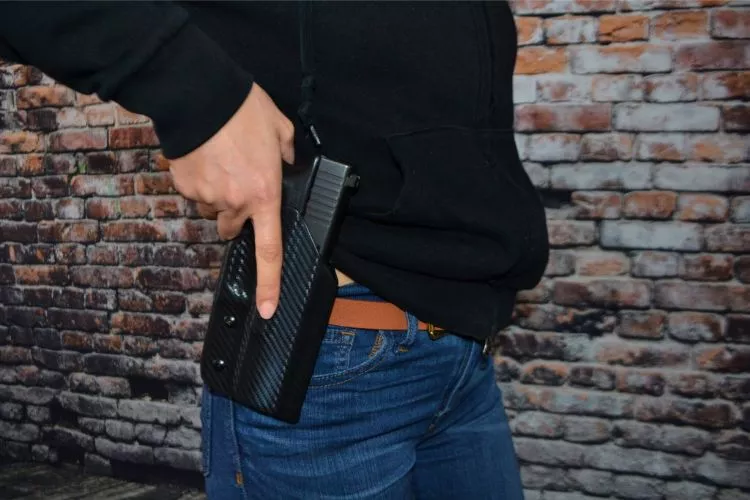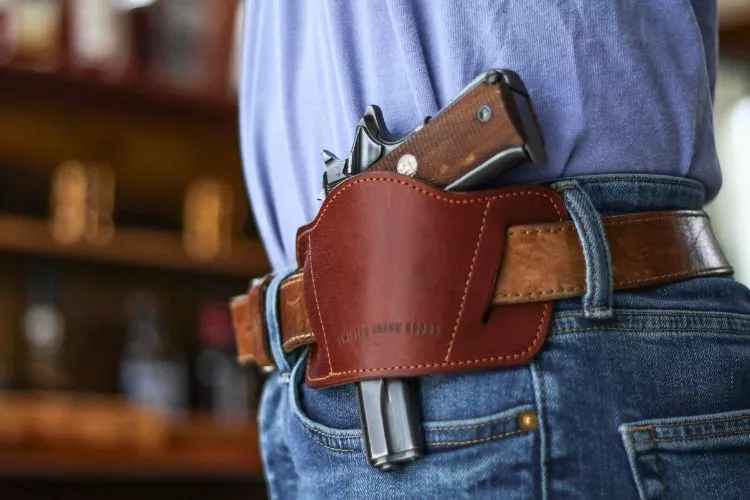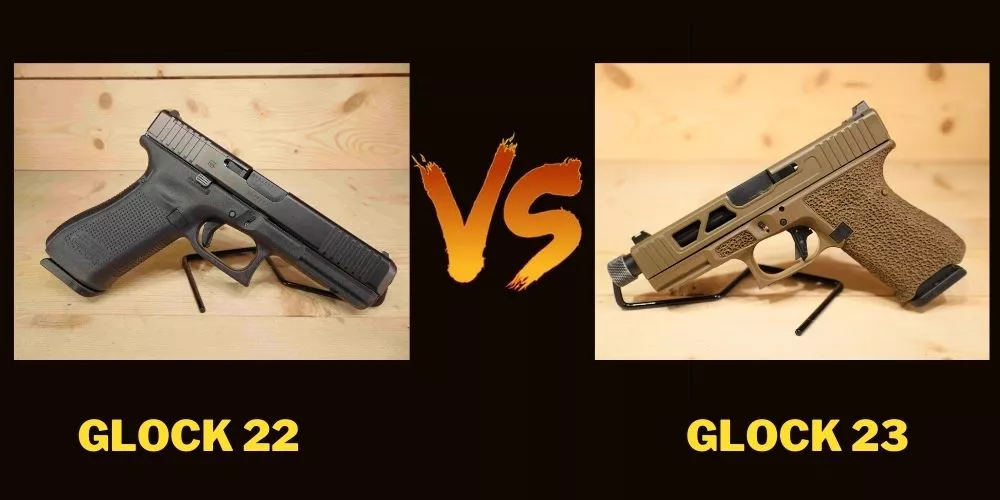When it comes to carrying a firearm, choosing the right holster is essential. The holster you select can significantly impact your comfort, convenience, and overall carrying experience. Two popular holster options that often come up in discussions are paddle holster vs belt Holster.

In this comprehensive guide, we will explore the pros and cons of each holster type, allowing you to make an informed decision based on your personal preferences and needs.
Understanding Paddle Holsters
Definition and Design
Paddle holsters are designed to attach to the waistband of your pants using a paddle-shaped piece that slides over the waistband from the inside. The curved surface of the paddle provides stability and helps keep the holster securely in place.

Pros of Paddle Holsters
Easy On and Off
One of the primary advantages of paddle holsters is their ease of use. The paddle design allows for quick and effortless attachment and removal, making them a convenient option for daily carry.
This ease of use is particularly beneficial if you frequently need to remove your firearm, such as when using public restrooms or places where firearms are not allowed.
Additionally, paddle holsters often offer excellent draw capabilities. With a paddle holster, you can rapidly and smoothly draw your firearm, ensuring a quick response in critical situations.
Enhanced Comfort
Paddle holsters typically feature a wider surface area that comes in contact with your body. This wider area distributes the weight of your firearm more evenly, reducing the pressure on specific points, resulting in enhanced overall comfort.
Moreover, many paddle holsters are constructed with breathable materials and ergonomic designs. These features help increase comfort, particularly during long periods of wear, where heat and moisture buildup could otherwise cause discomfort.
Cons of Paddle Holsters
Potential for Less Security
While paddle holsters are generally secure, some users may find that they offer less security compared to belt holsters.
Paddle holsters attach solely to the waistband, which means there is a potential for the holster to shift or slide during movement, especially during intense physical activity. However, with proper fit and adjustment, this risk can be minimized.
Additionally, paddle holsters typically have limited options for attachment and retention adjustments. This lack of versatility may not suit everyone’s preferences or allow for optimal customization.
Concealability Challenges
Another drawback of paddle holsters can be their bulkier profile. The paddle and the portion of the holster that holds the firearm can increase the overall size of the holstered firearm.
As a result, concealment can be more challenging, leading to potential printing issues where the outline of the firearm becomes visible through clothing.
Furthermore, for those who prioritize deep concealment, paddle holsters may prove less suitable. The wider profile of the holster may make it more difficult to conceal the firearm effectively, especially under clothing that fits snugly.
Exploring Belt Holsters
Definition and Design
Belt holsters, as the name suggests, attach directly to the waistband of your pants using belt loops or clips. They wrap around the belt, ensuring a secure fit.

Pros of Belt Holsters
Secure Fit
One of the most significant advantages of belt holsters is their secure attachment. Belt loops or clips provide a reliable and solid connection to your belt, minimizing movement or shifting of the holster. This stability ensures that your firearm remains in the same position, regardless of your motion or activity level.
Better Concealment Options
Belt holsters are generally more conducive to effective concealment due to their slimmer profile. The smaller footprint of a belt holster compared to a paddle holster means that it is easier to conceal under clothing, reducing the likelihood of printing or revealing the presence of your firearm.
Belt holsters also offer various positions along the belt for customization. This adjustability allows you to find the most comfortable and concealable position that suits your carrying needs and body shape.
Cons of Belt Holsters
Longer Draw Time
One significant drawback of belt holsters is the potential for a longer draw time when compared to paddle holsters.
With a belt holster, it may take slightly longer to access your firearm due to the need to navigate the loops or clips. This additional step in the drawing process could impact response time in critical situations.
It’s worth noting, however, that with proper training and practice, this drawback can be minimized, and users can achieve quick and efficient draws with belt holsters.
Potential Discomfort
Belt holsters may pose comfort challenges for some individuals. The pressure points created by the belt and the holster can sometimes cause discomfort, particularly during extended periods of wear.
While many belt holsters offer some level of adjustability, they may not provide the same level of flexibility and customization as paddle holsters.
Furthermore, users may have to experiment with the positioning and tension of the belt and holster to achieve optimal comfort without sacrificing security.
You may also read: Ruck vs Weighted Vest
Factors to Consider When Choosing
Comfort and Convenience
Personal comfort and convenience should be key factors in choosing between paddle holsters and belt holsters. Consider your daily activities, attire, and preferences when deciding which option better suits your lifestyle.
If quick attachment and removal are crucial, a paddle holster may be the better choice. If long-term comfort and the ability to easily conceal your firearm are important, a belt holster might be the more suitable option.
Security and Retention
Evaluate the security and retention mechanisms of both paddle holsters and belt holsters. Look for features such as adjustable retention screws, trigger guard coverage, and holster materials that securely hold your firearm in place.
Consider the level of movement and activity you anticipate while carrying and choose a holster that provides sufficient security for your needs.
Concealability and Printing
If concealment is a top priority, consider how each holster type affects your ability to effectively hide your firearm.
Balance the bulkier profile of a paddle holster against the potential printing issues it may present. Assess whether the slimmer profile of a belt holster allows for better concealment and choose accordingly.
Frequently Asked Questions (FAQs)
Are paddle holsters as secure as belt holsters?
Paddle holsters can be secure, but they may offer less security compared to belt holsters due to the potential for shifting or sliding during movement.
Can paddle holsters be worn for deep concealment?
Paddle holsters are generally not the ideal choice for deep concealment due to their wider profile, which can make effective concealment more challenging.
Which holster type is more comfortable for extended wear?
The answer to this question varies depending on personal preferences and body shape. Some individuals may find paddle holsters more comfortable, while others may prefer the stability and adjustability of belt holsters.
Do belt holsters offer faster draw times compared to paddle holsters?
Belt holsters may have slightly longer draw times compared to paddle holsters due to the need to navigate loops or clips. However, with proper training and practice, this difference can be minimized.
Can I use a belt holster without a belt?
Belt holsters are designed to work in conjunction with a belt. Attempting to use a belt holster without a belt may compromise its stability and result in a less secure fit.
Conclusion:
Selecting the right holster is essential for optimal comfort, convenience, and security when carrying a firearm. Paddle holsters and belt holsters each have their own unique advantages and disadvantages.
By considering factors such as comfort, security, and concealability, you can confidently choose between a paddle holster or a belt holster based on your personal preferences and needs.
Remember, the right holster is the one that allows you to carry your firearm safely and comfortably while maintaining accessibility when it matters most.


